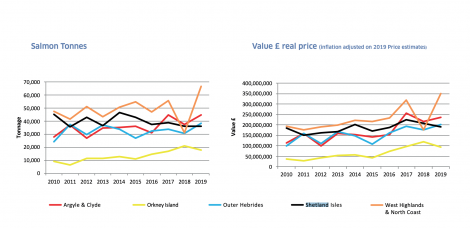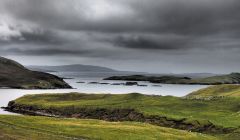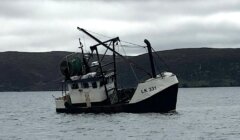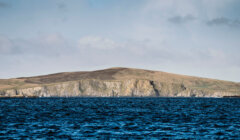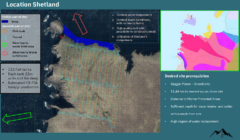Marine / Massive growth in salmon production but not in Shetland
LESS than 20 per cent of Scottish farmed salmon is now produced in Shetland – a marked shift from a few years ago when around one third of production was said to come from the isles.
The latest fish farm production figures, published by Marine Scotland, show that Shetland’s annual production of farmed salmon remained almost unchanged at around 36,000 tonnes.
During the same 12-month period since 2018 overall Scottish production rocketed from 156,025 tonnes to 203,881 tonnes, an increase of 30.7 per cent, with Highland region recording the steepest rise.
In 2018, 23 per cent of Scottish farmed salmon was produced in Shetland, a percentage that has dropped to 17.7 per cent in 2019.
Meanwhile, the total value of salmon produced in Shetland last year decreased by more than £15 million to £190.5 million.
Chairman of Shetland Aquaculture Grant Cumming said that plenty of large new ‘offshore’ sites have been commissioned along the Scottish west coast, but there is only limited scope for new sites in Shetland.
In addition, due to fish health considerations production in Shetland was reduced from around 45,000 tonnes some years ago to roughly 36,000 tonnes.
A review on whether to allow salmon farming in the water of Sullom Voe is still ongoing.
Rural economy secretary Fergus Ewing said across the country the figures “show record levels of salmon being produced by fish farms, with the finfish sector on track to achieve its sustainable growth target of 210,000 tonnes by 2020”.
The figures highlighted that in 2019 there were 227 full-time and six part-time staff involved in fish farm production in Shetland.
This was the equivalent of 155 tonnes of fish being produced per person. The employment numbers are up by 24 on the previous year.
Cumming said salmon farming continues to be a significant employer locally.
Become a member of Shetland News
The figures also show that in 2019 a total of 26 people were employed in ova (egg) and smolt (juvenile salmon) production in Shetland.
Around 6.5 million ova were laid down to hatch, while smolt production stood at around 4.5 million.
Last year the total harvest rate from smolt production was 77.1 per cent.
Ewing added: “With increased jobs and stock across all farmed fish I congratulate the sector for its efforts, delivering unprecedented production of this nutritious, quality seafood and creating more highly paid, highly skilled jobs in many of our most remote and fragile communities
“I look forward to salmon maintaining its place as Scotland’s biggest food export, as a key contributor to our food and drink success story which in turn is supporting the wider supply chain.
“With the impact of coronavirus and threats from Brexit, we will do all we can to support the sector and the benefits it brings, working to drive improvements in research, innovation and regulation to deliver further sustainable growth.”
Become a member of Shetland News
Shetland News is asking its many readers to consider paying for membership to get additional features and services: -
- Remove non-local ads;
- Bookmark posts to read later;
- Exclusive curated weekly newsletter;
- Hide membership messages;
- Comments open for discussion.
If you appreciate what we do and feel strongly about impartial local journalism, then please become a member of Shetland News by either making a single payment, or setting up a monthly, quarterly or yearly subscription.






